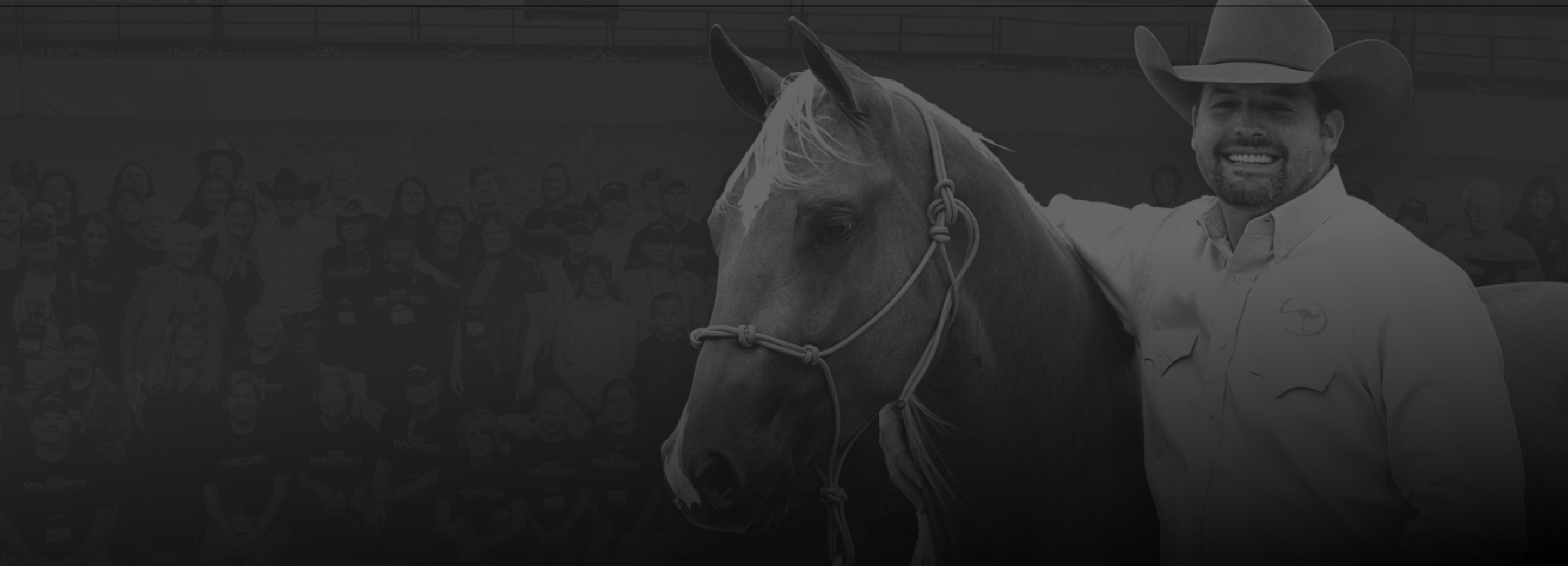Second Chance for Sailor Summary
Clinton Anderson from Downunder Horsemanship has dedicated his life to tackling some of the most challenging situations with problem horses and with problem owners. Using the Downunder Horsemanship Method, he teaches owners how to gain their horse’s respect and get them back under control. The key is teaching the owners how to be consistent and dominant with their horses to avoid dangerous situations. In this episode, we’ll watch as Clinton works on a peculiar case revolving around Melanie’s horse Sailor and his problematic bucking habit.

Melanie has had Sailor since he was a yearling and has tried to have him adopted multiple times. Unfortunately, both times he’s been adopted he’s been returned and deemed ‘unrideable.’ He has a problem with bucking and, even though he’s worked with trainers, it just seems to be getting worse. Now, at five years old, Melanie wants to tackle Sailor’s bucking problems and give him a second chance.
Since Sailor belongs to True Blue Animal Rescue, it’s been difficult to find adoption families that know how to work with problem horses. Instead of leaving it in their hands, Clinton is going to show Melanie just what needs to be done in order to get Sailor under control and safe for riding.
Their training session begins with Clinton explaining the three ways to earn a horse’s respect and get him to use the thinking side of his brain. You can move his feet forwards, backwards, left and right and reward the slightest try, redirect his movement, or you can inhibit his movement (training him to accept hobbles and laying him down).
Once Clinton earns Sailor’s respect, the gelding will calm down. This is because now, he’s using his thinking side of the brain instead of his reactive side. Using the roundpenning exercises, Clinton establishes himself as the leader and eliminates Sailor’s fear.
The next step is making Sailor understand that he doesn’t need to be worried about the tools or equipment Clinton is using to train him. That is accomplished by desensitizing him. To do this, Clinton uses his stick. Sailor shows visible signs of relaxing, so Clinton rewards him for it. He then takes things up a notch and spanks the ground with the stick and string around Sailor. The increased pressure causes Sailor to react and Clinton continues to spank the ground until the gelding stands still and shows a sign of relaxing. When Sailor remains standing still and relaxes, Clinton stops spanking the ground with the stick and retreats. He repeats this exercise until Sailor no longer reacts to the stick and string.
At this point, Clinton is ready to saddle Sailor. He tells Melanie that she should never let him buck, because it will continue to develop as a habit. Instead, she needs to get him moving and give him direction. He wants Sailor to use the thinking side of his brain so he will relax and gain confidence.
This helps break bad habits because horses only really think of one thing at a time. If Sailor starts thinking about bucking, and his feet are redirected, he’ll focus on his new task and stop thinking about bucking. After Clinton gets him to move a bit, he works on an exercise called Stirrup Driving, getting Sailor comfortable with the stirrups flapping up and down on his sides. Clinton is very obvious in his actions, trying to get Sailor to react to hearing and feeling the stirrups flap against his sides. The more movement, the better desensitized the horse becomes. Additionally, doing things you think will cause the horse to react helps to desensitize him and reduces the chances of him bucking out of fear.
When Clinton thinks Sailor is ready, he instructs Melanie to mount him but reminds her that it’s very important to listen to the instruction. Clinton drives Sailor around the roundpen in a series of turns while Melanie is in the saddle, which helps reinforce Sailor’s learned behavior from the training session. Finally, Clinton tells Melanie to let Sailor move forward on a loose rein and ease into the circle. As long as Melanie keeps working with this training method to get Sailor comfortable and at ease, Sailor will get his second chance.
If you have a horse with a dangerous problem or an attitude, don’t give up on them. All they need is to be retrained using the Downunder Horsemanship Method. If you’re willing to put in the time and learn, you can transform any horse into a safe and productive partner. For more information on any of the products from today’s show, visit Clinton’s website.




